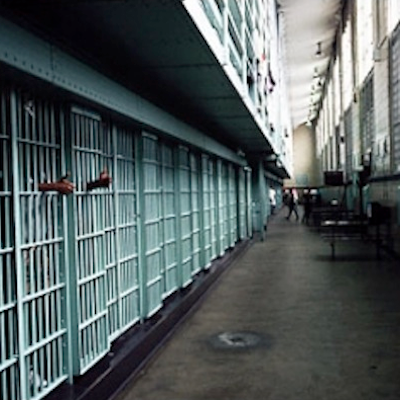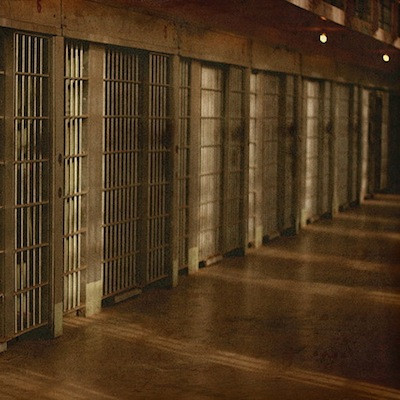Guest MINDSETTER™ Richard Ferruccio: Cost of Incarceration vs. the Cost of Crime
Wednesday, October 22, 2014
In a time of difficult state budgets, questions’ regarding the cost of increased prison population is a legitimate concern. There is a cost of incarceration, as there's a financial cost of crime to society. Who pays the price is the issue. The number of criminals on the street drives the amount of crime in Rhode Island.
The recent increase in violent crime, Rhode Island’s rising prison population and potential for increased cost to the taxpayer has been a hot topic in the media. Rhode Island families are scared and they are angry over daily reports of violence on our streets. When discussing issues it is important to have the facts in order to understand the full implications of what is happening.
The true cost of crime can be difficult to measure in dollars and cents. It is not only the loss of property, health or life but the emotional damage to a community’s sense of security.
GET THE LATEST BREAKING NEWS HERE -- SIGN UP FOR GOLOCAL FREE DAILY EBLASTWhen considering crimes impact on Rhode Islander families, we should look at last year’s statewide statistics on crime from the RI State Police when determining the financial cost of crime. In 2013 Rhode Island experienced 33 murders, 708 sexual assaults including rape, 698 robberies, 1583 aggravated assaults and 5656 burglaries.
A study conducted by Iowa State University calculated the costs of five crimes, murder, rape, armed robbery, aggravated assault and burglary. The study took in account the victims costs, criminal justice system costs, lost productivity estimates for both the victim and the criminal, and estimates on the public's resulting willingness to pay to prevent future violence. The study put the cost per murder at $17.25 million, rape at $448,532, armed robbery at $335,733, aggravated assault at $145,379 and each burglary $41,288.
The recent string of violence in our streets has citizens concerned. Crime statistics support that habitual criminals commit the majority of crimes. Rhode Island families repeatedly pay for the costs of these crimes.
In 2008 the Department of Corrections was regularly operating over capacity. Inmates were being housed on the floor in temporary holding cells. Director AT Wall presented a plan to increase the amount of behavioral good time credit and to provide additional days off for program participation and completion. There were other options but this was the direction they went. The General Assembly enacted these legislative changes as part of the 2008 state budget.
What is prison “Good Time”, it is a sentence reduction given to prisoners who maintain good behavior while imprisoned and forparticipating in educational programs, community service projects, or medical experiments. Some prisoners will not be eligible for certain amount of good time, due to the nature of their offenses.
I believe Director Wall and the Department of Corrections failed to consider possible dangers to the public when it sold the RI General Assembly this plan to increase the amount of “Good Time” granting early release to prisoners in an effort to save money.
Inmates, even violent habitual offenders were granted an increase in “Good Time” simply for their good behavior while incarcerated at the ACI.
Under the old law, time earned corresponded with the length of your sentence for a maximum of 10 days off a sentence per month. 1 year sentence = 1 day off per month, 15 year sentence = 10 days off per month. An example of the impact of the law change, under the old law an inmate sentenced to 2 years would have been granted 2 days “Good Time” off the sentence per month plus 2 days for working a prison job, for which they get paid for, for a total of 4 days off a sentence per month.
The new law changed all that. Now that same inmate serving 2 years, will earn 10 days off per month, and another 2 days for a prison job, plus up to 5 days for class/program participation, which takes the number to 17 days off a sentence per month. In addition inmates can get up to 30 days for each class/program completed, inmates can also take college courses, which cost an inmate $10 but when completed will grant another 27 days for each class completed/passed. All this is combined monthly, for “earned” time off a prison sentence.
A horrifying example of the danger with RI’s early release on “Good Time” was Mathew L. Komrowski.
On June 8th, 2011 Komrowski a career violent criminal was released 448 days early from serving his sentence for armed robbery in 1999 for which he was given to 13 years to serve, and seven years on a suspended sentence.
Just 4 days later he was back at the ACI accused of the brutal murder of Shirley Donnelly on June 9th, one day after his release. Komrowski was also accused of setting her apartment on fire to cover up the crime, possession of a stolen motor vehicle and larceny.
I believe the Department of Corrections exhibited bad judgment: while pursuing these cost-saving measures, it neglected the most important consideration, the potential impact on public safety.
Hundreds of inmates have been released from prison early since the 2008 good time law. The RI DOC reports its prison recidivism rate at around 50%, applying that statistic to inmates released early, you can see this laws potential impact on increasing crime within our state.
In 2008 the ACI population peaked at 3860, the 2014 population was 3214, which is a reduction of 646 inmates from 2008. Based on the DOC questionable recidivism number of 50%, 323 of the 646 will be returned to the ACI within 3 years on new criminal charges.
The effect this law has had on Rhode Island’s crime rate remains to be seen and warrants a closer scrutiny.
The relationship between Rhode Island’s (4th lowest) incarceration rate, the Rhode Island “Good Time” law, which is the most generous in New England’s and our current crime rate is debatable. Common sense justifies a connection.
Ensuring public safety and protecting the community is the fundamental purpose of our government, this demands a well-functioning criminal justice system. A balanced approach combines strong law enforcement with the economic, social, and moral rehabilitation of criminals.
We know that tough sentencing is effective and economically efficient. We also know we should not be releasing career criminals early from prison only to return to life of crime. Rhode Island families deserve better.
Richard Ferruccio is the current President of the Rhode Island Brotherhood of Correctional Officers and has been a Correctional Officer since 1984.
Related Slideshow: Cost Per Prisoner in Rhode Island FY2014
The Adult Correctional Institutions (ACI) at the Rhode Island Department of Corrections (RIDOC) is comprised of 7 inmate facilities (5 male, 2 female), which are all located within 1 square mile in Cranston, RI. The State of Rhode Island operates a unified correctional system, meaning that all offenders (i.e., those awaiting trial, sentenced, and under community supervision) in the state are under the jurisdiction of RIDOC.
Related Articles
- NEW: Rules on Restraint of Pregnant Prisoners Passes House
- NEW: Former North Providence Councilman Sentenced to Prison
- RI Second In Nation For Prison Inmate Spending
- Correctional Union—Prison Closure Threatens Public Safety
- NEW: Cranston Scammer Gets 96 Months in Prison
- House Judiciary to Hear Hate Crimes, Pregnant Prisoner Bills
- Prison Sentence Reductions: RI Most Generous State in NE
- Prison Redistricting: So What’s the Cost?
- LISTEN- Rhode Island Prison Population Increased 250% Since 1980
- BREAKING NEWS Buckles Melise Sentenced to 46 Months in Prison
- Former State Senator Sentenced to Federal Prison
- BREAKING NEWS: ‘Survivor’ Hatch Sentenced to Federal Prison
- NEW: North Providence Police Chief Sentenced to 6 Months in Prison
- The Cost of Prison—See the Docs
- Report: Rhode Island Prison Population Increased 250% Since 1980
- Angiulo: Non-Violent Drug Offenders May See Federal Prison Stays Shortened
- RI Prison Population Spikes, Will Cost Millions to Budget
- NJ Man Sentenced to Federal Prison for Transporting RI Minor to Engage in Sex
- New England States With The Most Prisoners
- Maximum Security Prisoners Cost RI up to $200k Each Per Year
- NEW: State Rep. John McCauley Sentenced to 27 Months in Prison
- NEW: Moreau Sentenced to Two Years in Federal Prison
- Prison Methadone Policy Sends Inmates Back To Heroin
- Former Narragansett Couple Sentenced to Federal Prison in Drug Trafficking Conspiracy


















